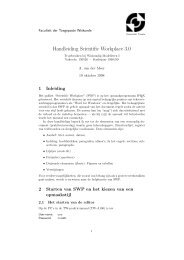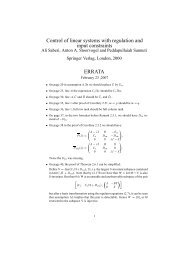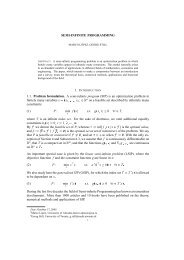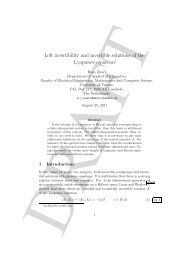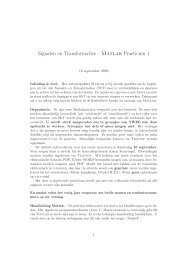Chapter 3. Duality in convex optimization
Chapter 3. Duality in convex optimization
Chapter 3. Duality in convex optimization
Create successful ePaper yourself
Turn your PDF publications into a flip-book with our unique Google optimized e-Paper software.
Def<strong>in</strong><strong>in</strong>g<br />
ψ(y) := <strong>in</strong>f {f (x) + ∑<br />
m y j g j (x)}<br />
x∈C<br />
the Lagrangean-dual problem of (CO) can be written as:<br />
(D) :<br />
sup<br />
y≥0<br />
ψ(y)<br />
j=1<br />
The (sup-)value of (D) is denoted by v(D).<br />
L.<strong>3.</strong>2 (Even without <strong>convex</strong>ity assumptions on (CO))<br />
The function ψ(y) is a concave function and thus, (D), the<br />
Lagrangean dual of (CO) is a <strong>convex</strong> program.<br />
Note: By def<strong>in</strong>ition ψ(y) is called concave if −ψ(y) is <strong>convex</strong>.<br />
So that max y ψ ≡ m<strong>in</strong> y −ψ (a <strong>convex</strong> problem).<br />
Note:!! The follow<strong>in</strong>g weak and strong duality results are<br />
more general than the results of Th.<strong>3.</strong>4, Th.<strong>3.</strong>6 <strong>in</strong> KRT.<br />
CO, <strong>Chapter</strong> 3 p 2/18



